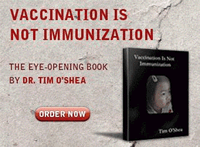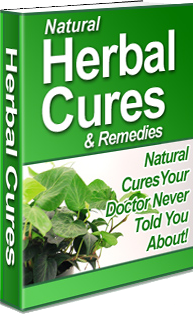Mumps and Flu Vaccine Awareness
Recently I read an article that had me wondering what are they thinking, anyway. As a consumer health researcher for over 35 years, I can see a clear childhood diseases history trail in the rear view mirror, as they would say.
One issue that doesn’t seem to sit right with me is the fact that as a young child in the 1940s, who went to both public and parochial schools, I never remember a child dying from any of the childhood communicable diseases, and we lived in a large city.
Furthermore, I remember parents holding ‘measles parties’ where they would take their children to the house of a child with measles so their child could contract the disease; get it over with early in life; and acquire natural, life-long immunity. It was a given back then: children got childhood diseases, and we survived. Just ask anyone who is 60 years or older how it was done.
What happened to change that childhood ‘tradition’ of dealing with communicable childhood diseases to the current fear mongering one where parents are mentally bludgeoned to get their children vaccinated against a host of childhood diseases, which, in fact, may be Nature’s way of improving and strengthening the immune system in children, who are not living in squalor or are nutritionally deficient, to acquire innate or “natural immunity.” Vaccines provide accelerated artificial responses, which vaccinologists consider “acquired immunity” that needs to be boostered every so often with more doses of these vaccines.
[do_widget id=text-16]
Granted, in Third World countries where sanitation is lacking; water is not safe, potable, and plentiful; and food and nutrition are compromised, childhood communicable infectious diseases can be devastating. Resources should be expended for improving the essentials of daily living, and then life would improve for everyone except Big Pharma, which would not make billions of dollars from vaccines that cause adverse events and even death. See Fact: Vaccinations are Killing Our Kids. In addition, such vaccination programs are contributory, if not causal, factors for many of the epidemic levels of chronic childhood medical conditions that were unknown or ‘rare’ before vaccines were introduced.
The article that prompted my writing this was discussing “Extra doses of mumps vaccine during outbreaks still in question” wherein this was stated:
Administering additional doses of vaccine may not be the optimal solution to a mumps outbreak, according to study data published online. [1]
That remark revolved around this issue:
CDC researchers reported data on 2,503 sixth- through 12th-grade students from three schools in an Orthodox Jewish community in Orange County, N.Y., where a mumps outbreak occurred in 2009. All of the students had documented two doses of mumps- containing vaccine. A total of 320 vaccinated children developed mumps. [2]
What really struck me about the mumps vaccine issue is my remembering that the mumps vaccine manufactured by Merck & Company was reported to be not effective, and two qui tam plaintiffs filed a civil action on behalf of the federal government, Civil Action No. 10-4374, U.S. District Court for the Eastern District of Pennsylvania filed August 27, 2010. Part of the filings included
The original 95 percent efficacy rate for Merck’s mumps vaccine was based upon the 1967 filing for governmental approval.
 Can you imagine that? And, Merck has been contending that its MMRII vaccine was 95 percent ‘effective’ (efficacy level) since at least the year 2000. Furthermore, the complaint charges that Merck listed that false information in the FDA-approved vaccine package inserts which the U.S. Centers for Disease Control and Prevention (CDC) and the National Vaccine Program relied upon as accurate information to promote this vaccine to health agencies. The information for the mumps component was not scientifically accurate, nor was Merck able to produce that 95 percent effectiveness level using the accepted vaccine certification practices upon which the FDA relied.
Can you imagine that? And, Merck has been contending that its MMRII vaccine was 95 percent ‘effective’ (efficacy level) since at least the year 2000. Furthermore, the complaint charges that Merck listed that false information in the FDA-approved vaccine package inserts which the U.S. Centers for Disease Control and Prevention (CDC) and the National Vaccine Program relied upon as accurate information to promote this vaccine to health agencies. The information for the mumps component was not scientifically accurate, nor was Merck able to produce that 95 percent effectiveness level using the accepted vaccine certification practices upon which the FDA relied.
The Orange County, N.Y., mumps outbreak occurred in 2009. Was that outbreak a result of children receiving non-effective mumps vaccines, since 320 children who contracted mumps were doubly vaccinated? That 2009 Orange County, N.Y., mumps outbreak, at least, was not said to be caused by non-vaccinated children, which normally is the stock reason given by the media for infectious disease outbreaks.
The above illustrates that there are too many unknowns revolving around vaccines, some of which are not discovered until years after vaccinations are given, such as the SV40 cancer causing virus in the polio vaccines given in the 1950s and ‘60s. Plus, other viruses in various vaccines, which I discuss in my forthcoming book, Vaccination Voodoo, What YOU Don’t Know About Vaccines, which will appear on Amazon.com soon.
Screening Children for Possible Contraindications to Vaccines
One possible way to preclude some unknowns, especially with regard to possible adverse reactions or contraindications, would be for parents and guardians to answer a screening checklist they can print out from Immunization Action Coalition, and give that completed form to the healthcare professional who will be administering the vaccines BEFORE any vaccinations are given. Make certain to keep a photocopy for your records—just in case there could be a problem and you find yourself filing a claim before the an administrative ‘vaccine court’ master. Also, always remember to obtain the manufacturer and vaccine names, plus the batch number of any vaccines given to you or your children.
The Screening Checklist for Contraindications to Vaccines for Children and Teens asks a dozen questions that every vaccine administrator should be asking before vaccinating to determine if the child is well enough, or is a safe candidate, to receive vaccines.
Some of the questions asked should raise red flags for the physician, nurse, or vaccine administrator, such as:
#1. Is the child sick today?
#3. Has the child had a serious reaction to a vaccine in the past?
#6. If your child is a baby, have you ever been told he or she has had intussusception?
#7. Has the child, a sibling, or a parent had a seizure; has the child had brain or other nervous system problems?
#11. Is the child/teen pregnant or is there a chance she could become pregnant during the next month?
#12. Has the child received vaccinations in the past 4 weeks?
The six questions not listed above are lengthy and involved, but very “telling” insofar as a “yes” answer should get special attention and probably delay or provide a medical exemption from receiving vaccines.
Now on to Influenza Vaccines.
Autumnal chill is in the air and everywhere you look, one sees signs indicating “Flu Shots Here.” What most folks don’t realize is that flu vaccines are not very effective. Even the CDC said in February 2013 that the flu shot was 9 percent effective for those over 65! This CDC website gives the February 2013 Seasonal Influenza Vaccine Effectiveness Rates for the USA.
So, here’s information that everyone needs to know, I think, before considering an annual flu vaccination, especially for this 2013-14 season when there are quadrivalent—4 actives in a vaccine—influenza vaccines.
Information about vaccines needs to be from independent, non-vested-interests. The Cochrane Collaboration fills that requirement, par excellence, I believe. Since more than 200 viruses can cause influenza or influenza-like symptoms/sicknesses, what protection does a vaccine containing only 4 virus actives provide?
According to Cochrane,
At best, vaccines might be effective against only influenza A and B, which represent about 10% of all circulating viruses. [3]
With that in mind, maybe readers will want to check out The Cochrane Library for a wealth of information on influenza, prevention, treatment, and Chinese medicinal herbs for treatment of the flu.
No-Thimerosal Influenza Vaccine Guide
However, for those who believe in vaccinations, Dr. Paul G King, PhD, created the Guide to No-Thimerosal Influenza Vaccine Choices in the USA for the 2013-2014 Flu Season.
 Carefully study page 4 or T-1 because of all the variables involved, which an individual may want to contemplate considering all the ingredients in vaccines, especially if the person is pregnant, or if the vaccine contains a “live” virus, which can shed. Perhaps, you are allergic to eggs, so vaccines made on chicken eggs is important information to know.
Carefully study page 4 or T-1 because of all the variables involved, which an individual may want to contemplate considering all the ingredients in vaccines, especially if the person is pregnant, or if the vaccine contains a “live” virus, which can shed. Perhaps, you are allergic to eggs, so vaccines made on chicken eggs is important information to know.
Dr. King does a yeoman’s job of delineating all the USA influenza vaccines for 2013-14.
Perhaps, the best course of action readers can take to prepare for the coming flu season is to get a handle on your vitamin A, C, and D intake. Check out the herb Echinacea to build up the immune system, and eat nutritiously: no GMOs and as much organically-grown food as possible.
Hydration is important, including herbal teas. Cut down or eliminate junk foods and soda. Get plenty of sleep. And, get in the habit of washing hands several times a day with pure soap and warm water, especially before putting any food or drink into your mouth or touching your face.
Pretty soon it’s going to be sniffle time. Don’t you want to be ready?
[2] Ibid.
[3] http://summaries.cochrane.org/CD001269/vaccines-to-prevent-influenza-in-healthy-adults
Catherine J Frompovich (website) is a retired natural nutritionist who earned advanced degrees in Nutrition and Holistic Health Sciences, Certification in Orthomolecular Theory and Practice plus Paralegal Studies.
Her work has been published in national and airline magazines since the early 1980s. Catherine authored numerous books on health issues along with co-authoring papers and monographs with physicians, nurses, and holistic healthcare professionals. She has been a consumer healthcare researcher 35 years and counting.
Catherine’s latest book, A Cancer Answer, Holistic BREAST Cancer Management, A Guide to Effective & Non-Toxic Treatments, is available on Amazon.com and as a Kindle eBook.
Two of Catherine’s more recent books on Amazon.com are Our Chemical Lives And The Hijacking Of Our DNA, A Probe Into What’s Probably Making Us Sick (2009) and Lord, How Can I Make It Through Grieving My Loss, An Inspirational Guide Through the Grieving Process (2008).



